On the Road is a weekday feature spotlighting reader photo submissions.
From the exotic to the familiar, whether you’re traveling or in your own backyard, we would love to see the world through your eyes.
Pharniel
Back in 2019 my spouse and I crossed off a bucketlist entry and went to Japan.
We spent two and a half weeks and hit most of the ‘big’ cities. We timed our trip to hit peak foliage and it did not disappoint.
For those wondering how Big A Deal fall in Kyoto is – there are signs at the train station letting you know which temples are at what level of peakness and…whoa. Mindblowing what a few hundred years to shape a garden can do.
While Osaka was more our speed, Kyoto is a big sleepy town. It’s also laid out in a sensible manner which really helps when getting around.
This batch will be various temples in Kyoto in fall. I’ve got pictures of when we climbed up a monkey mountain, but that really deserves its own entry.
These are all daylight shots, I’m saving the night time for the next submission because shooting at night, on a cell phone, in shoulder to shoulder crowds was a significant challenge.
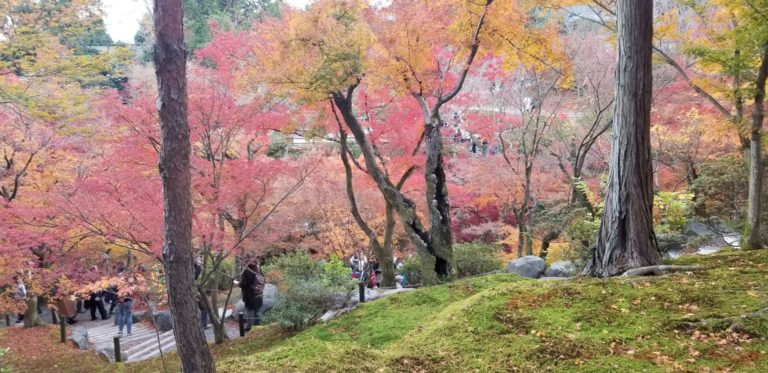
A slight hill gives a shot of the gardens, and just how well they are planned. Also how crowded things were.
One of the most famous temples in Kyoto, Tokufuji has its own subway stop. The trick, according to the travel guide, is to circle the temple from the outside, then work your way in.
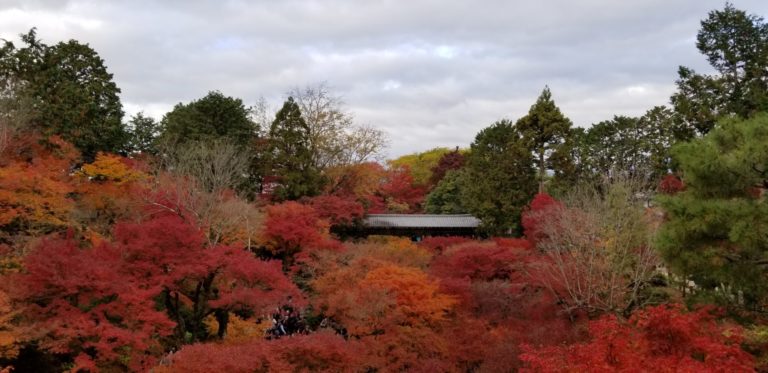
Part of why we trusted the travel guide.
The sea of trees you can see here is amazing, and the bridge is in the Temple proper, this is another bridge that overlooks it all.
Entrance to most temples isn’t free, and can be quite expensive.
Rates ran 500 to 1,000 yen for daytime admission, and night shows could get up to 2,000 yen a person.
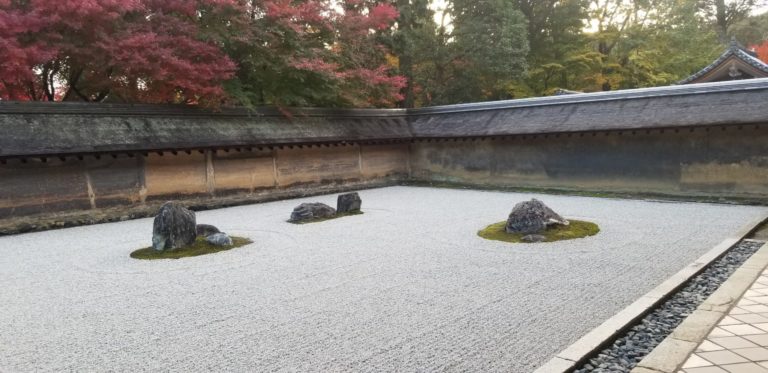
This is a picture of the oldest zen garden in Kyoto, if not the oldest surviving period.
The walls were made of clay infused with oil and over hundreds of years the oil has seeped out, staining the walls.
This was super peaceful, if also crowded. Less visually arresting than the other gardens, it was still very impressive.
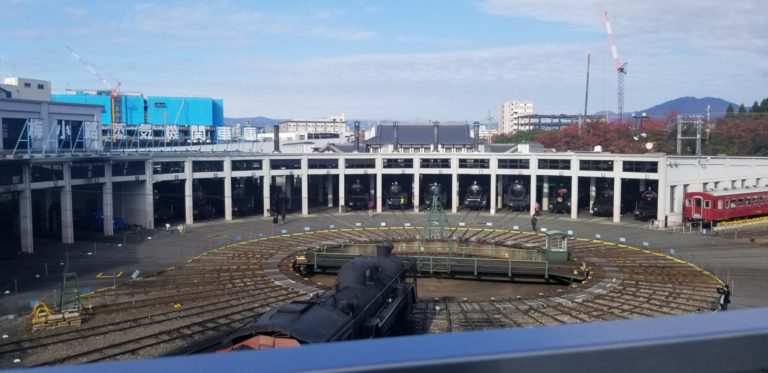
A shot of the roundhouse in the back yard.
Just…I can’t emphasize how awesome this museum is.
Just lots of full size trains, and plenty of guides.
I’m used to Greenfield Village and the Ford’s obsession with trains, and this blows it all away.
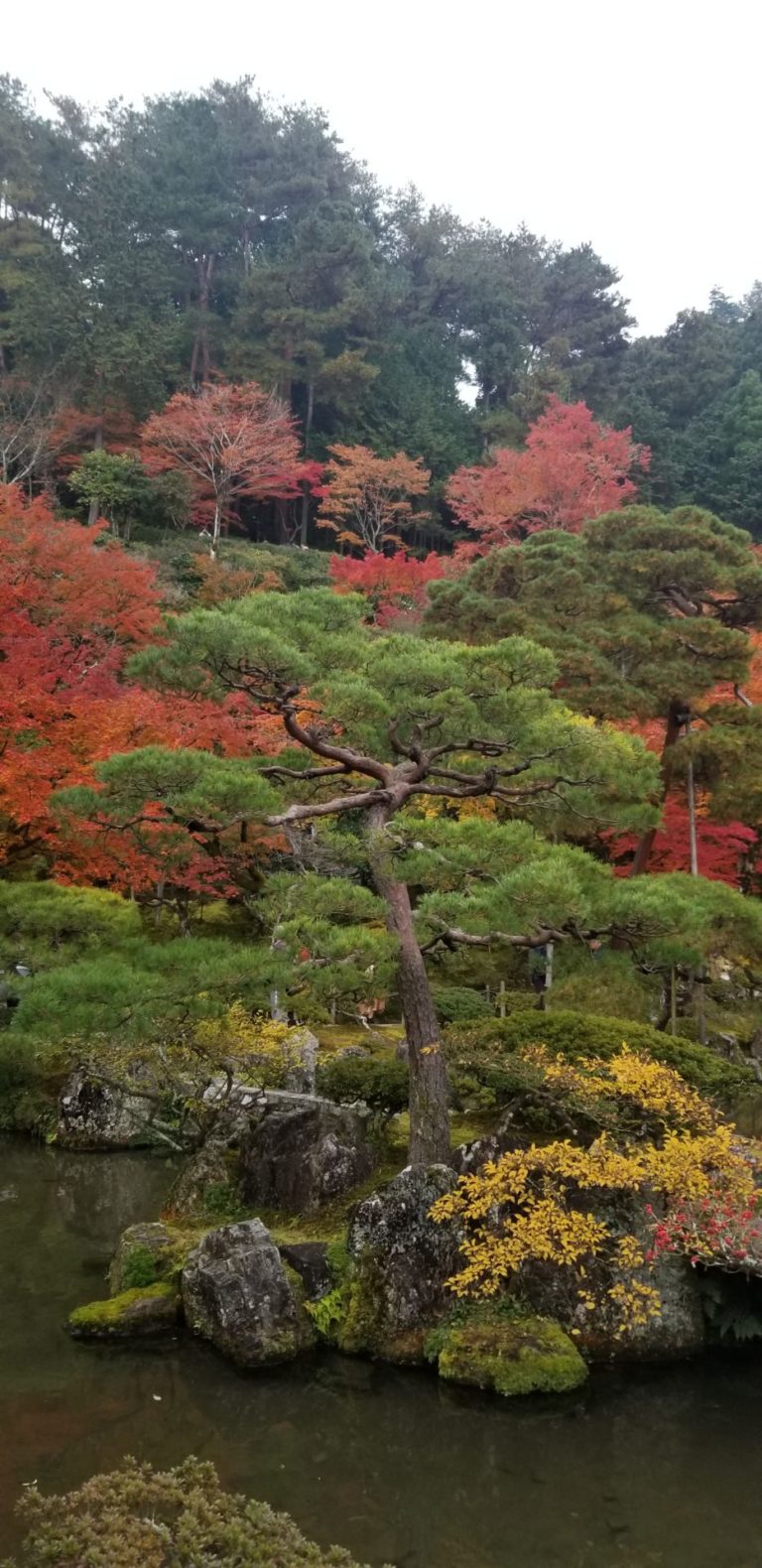
Not my best composition, but it suits the sculpted chaos that is the average temple garden.
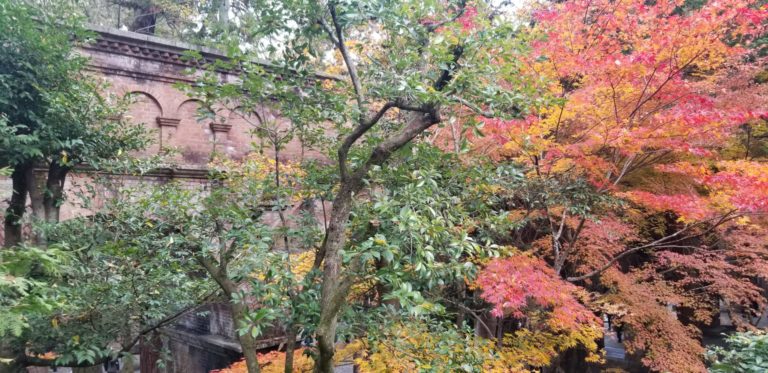
For some reason (plenty of reasons, but better expressed here) the Nanzenji Fukuchicho temple has a Roman-style aqueduct. A fully functional, currently in use, aqueduct. That you can climb on top of.
It’s quite beautiful.
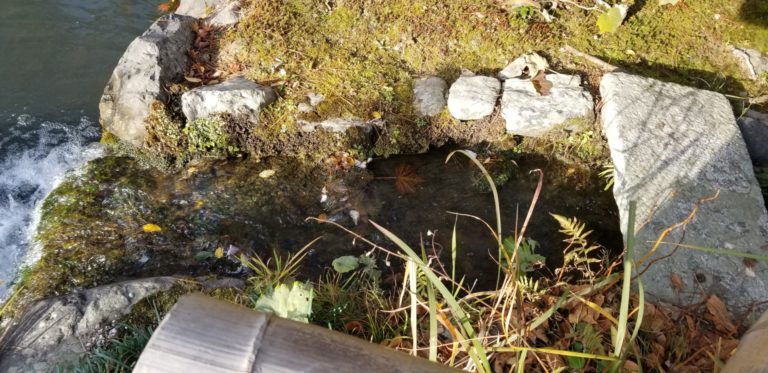
Just a shot of the nifty little streams all over the garden.
There’s just details like this nestled in every corner. Easy to get lost and, well, that’s sort of the point.
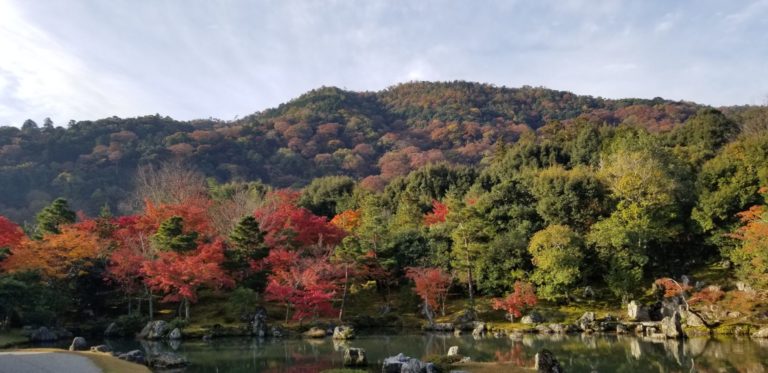
I took hundreds of photos, and this is the only one that even comes close to capturing the scale, detail, and beauty of the temple gardens.
You can see the reflection in the pool, the use of mounds behind to give the appearance of unified mountains, and the variety and color in the trees.

KSinMA
Beautiful!
JeanneT
Thank you for sharing these shots. That must have been an outstanding trip!
p.a.
Wow! Tks.
MazeDancer
Gorgeous pictures!
Dorothy A. Winsor
Those pictures are so beautiful, they don’t look real.
arrieve
Just wonderful colors. I kind of missed fall sitting in my apartment so I’m grateful for the vicarious experience.
randy khan
We only got to one temple when we were in Kyoto, and the gardens were marvelous. These photos make me want to go back for more. (Well, I wanted to go back already, but you know what I mean.)
J R in WV
Great work building and fostering those gardens. The trees have been sculpted as if they were bonsai, only they’re nearly full sized.
I’m sure you were frustrated trying to shoot such an all encompassing experience — it can’t be done with a camera, solo. Perhaps with a crew and hi-def video cameras moving very, very slowly, creating hours of imagery.
But you have done a great job with your still camera, composing the photos, selecting the best photos from the hundreds you had. Just picking out the favorites at home after the trip is a terrifically hard job.
Thanks again for sharing. The aqueduct is a great oddity. I’ll look that up when I get back home — I’m doing my final supplies trip now, to hold us til next year if at all possible.
TheronWare
I remember riding on a subway train in Tokyo and the seats were velvet covered!
JanieM
Beautiful, wow. I could sit and look at the first one all day long. Plus I love the phrase “sculpted chaos.”
JanieM
Sorry mods, I mistyped my email address so I have a comment in moderation. Should have tea before typing, and/or get a new keyboard.
Princess
Beautiful. Thank you. Making it back to Japan is a top priority.
Miss Bianca
@JanieM: Me too! Maybe “sculpted chaos” will be my new band name!
I love your Maine photos, too. Making me terribly nostalgic.
dm
That aqueduct at Nanzenji has a fantastic story behind it.
When the Emperor moved the court to Edo (Tokyo) in the middle of the nineteenth century, the mayor and town council of Kyoto were staring at economic collapse, since the city economy was based on supplying the Emperor’s court and attendants (this is why there are candy shops in Kyoto that date to the 16th century).
They hit upon a plan to bore a tunnel through the mountains to Lake Biwa, a large fresh water lake in central Honshu, which was a major route for shipping commerce. The tunnel would carry boats, which would carry the commerce to Kyoto, and thence to the sea. The ready access to goods meant Kyoto could shift its economic focus and remain a thriving city.
The task of building the tunnel fell upon a young engineering student (I think he was 23 when he started). He pulled it off, complete with building factories to make bricks (new to Japan at the time) to line the tunnels, and even building a hydroelectric plant since the Kyoto end of the tunnel is about 100 feet above the river, enough head to run some generators. There’s a tramway that carries canal boats the final leg down the hill to the river.
The aqueduct is an offshoot of the canal, providing fresh water for the city. After, the British Society of Civil Engineers gave him an award.
JanieM
@Miss Bianca: Thanks. There should be a few more Maine pics coming up next week.
Captain C
These are lovely photos. I’m glad you made it to the Railway Museum; it’s truly magnificent.